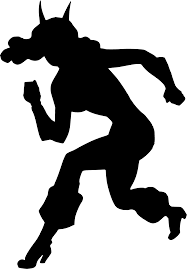Sexualizing Female Superheroes

April 18, 2019
In today’s world, the comic book theme has come by storm in the forms of actual comic books, action figures, television shows, and movies.
In the past, it has been a mostly male-dominated field of Superheroes. However, in recent years (roughly 2008 to date), female superheroes have been seeing more screen time or even getting their own independent films.
When taking a look back at heroines drawn in comic books, they all share general traits: an hourglass figure, larger chest, round behind, tight and sometimes minimal clothing. This was the norm for all female superheroes, but is it still that way today when they are transferred from book to movie?
If we look back in history, women use to be seen as objects and property, or just someone who should be seen and make the food, do the chores, not allowed to work. Over time this has changed, and women have come a long way by gaining the right to vote, being able to join the workforce, and being a part of a higher up government position. Women are now respected and treated properly, but they are still used to manipulate the male and sometimes female viewers in films and television shows.
Hollywood uses the idea of sexualization to drag viewers in to see the movie because although women are respected, people still find themselves witnessing an overly-sexualized female body. According to Sara Israelsen-Hartley, a writer at the Deseret News, “ Over the past 10 years, Hollywood’s top films have shown more than 40 percent of young women in ‘sexy attire’ and 35 percent with some nudity, while almost 61 percent of female actors were thin.”
These might seem like small numbers, but when looking at some of the top movies over the past few years they fall under these percents. Movies like Transformers, The Avengers, Star Trek, or even Space Jam fall into these percents for women, but Hartley also stated “77 percent of young female characters were caucasian” and “52 percent had heterosexual romantic relationships.”
These numbers are from 2017, however, and there has been a slight decrease but not enough to make an impact. Each statistic maybe dropped by 1 or 2%, barely enough where it was considered to be an estimate and not an accurate data drop. That’s just some generalized ideas about women in Hollywood, but the biggest offenders of this type of stereotype are superhero movies with female heroines involved.
Let’s start by taking a look at the classic female superhero herself, Wonder Woman. Wonder Woman has always been depicted as this unrealistic female with the big hips and chest with a skinny waist and wearing enough clothes to still keep to comic book PG. In 2017 the Wonder Woman movie was released starring Gal Gadot. Taking a character from page to the big screen can be difficult especially when the character was always shown as a cartoon, never a real-life person.
Gadot fits the image of Wonder Woman perfectly. She is this strong woman with a background in martial arts–but she was also a model. This means she has the “model body” of today, matching the typical cartoon depictions of Wonder Woman. Both comic book drawing and real-life depiction have larger sized hips with a skinny torso and a larger chest.
One of the biggest offenders of this female depiction in comic books is Catwoman. Catwoman is notorious for having a large chest and large hips while being very skinny. Her character has always supposed to have been a tease to Batman or any other person she encounters in Gotham, as well as being that was for the viewers or readers. In effect, her portrayal shows women need to use physical attraction to have power, undermining female efforts to achieve success in using character traits, personality, or merit.
In every movie that there has been a Catwoman, whether it is a Batman movie or the Catwoman movie, she has always worn tight clothing exposing parts of her body, but also being very skinny with the big hips and chest and backside. DC seems to do that with all their comic characters moving to the big screen.
The sexualization of the female superhero is not limited to DC; Marvel, too, has done their fair share of damage. Most recently, they had a chance to change the narrative on females in positions of power, and they relied on the age-old depictions once again.
In March of 2019 Captain Marvel was released being another female superhero as the lead role. Now a crash course of Captain Marvel is she is a half-human, half-alien warrior with powers others from her race don’t have because of an accident that turned her into who she is.
In the comics, Captain Marvel is yet again shown with the female stereotype of the wide hips big chest and skinny body. When she was transferred over to film she is played by Brie Larson, and she once more fits the sexualized-heroine stereotype. Although Larson does fit into most of the categories that a person would see from a comic book, she does seem to be more realistic with the rest of the female population.
As years progress it seems that any female lead is starting to have more realistic expectations over the ones that people only see from models or through a Photoshop image. This is especially hitting the comic world hard because for decades all superheroines have been shown to have the same body type, and now films are slowly changing that to show women with a natural body type instead of a dieted/surgical body. It will be exciting to see what Marvel Comics does with the Dark Phoenix movie and see if they will make her have a realistic body or have the stereotypes talked about.
Hopefully in the near future, the comic book world will accept these changes that need to be made for more realistic standards instead of giving women false hope on getting to that type of body or giving men false expectations.


sherll • Oct 31, 2020 at 9:16 am
I have an assignment that I need to elaborate
– were male superheroes sexualized as a female superheroes ?